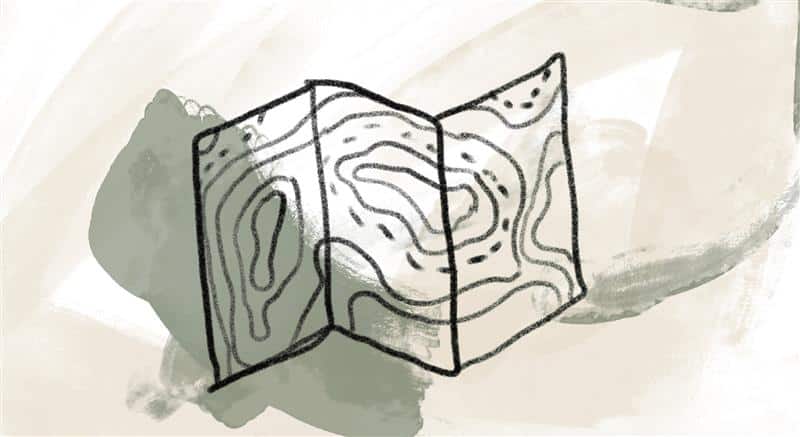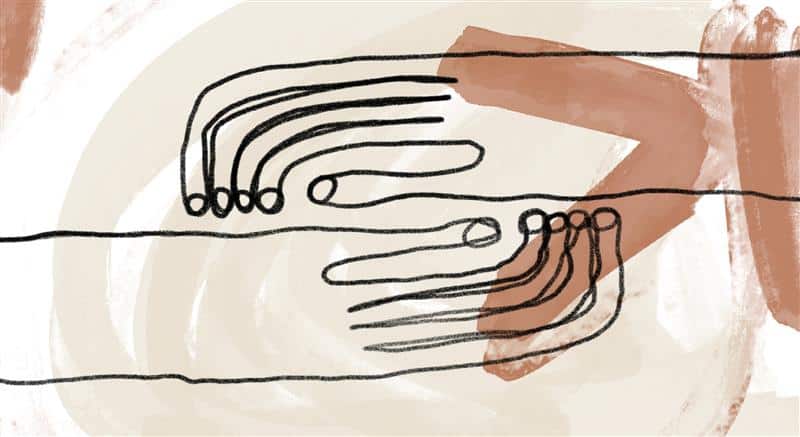
Today’s meditation is adapted from a morning meditation sit at the CAC, during which Richard introduced a selection of quotations from the desert tradition. Richard shows how the teachings of the desert mystics align with the practice of centering prayer:
I’ve continued to be influenced by the desert mystics and the Eastern Church Fathers, even to the point where I say, “My gosh, this is a different Christianity.” It’s completely different from the issues we’re dealing with today. The main thing I’m struck by is how some of their teaching is almost Buddhist. It totally affirms what we’re taught in centering prayer. Here are several of their teachings to show that what we’re saying in contemplation and centering prayer was clearly understood for centuries in Eastern Christianity.
Until the mind is freed from the multitudes of thoughts, and has achieved the single simplicity of purity, it cannot experience spiritual knowledge.
—Isaac of Syria [1]
We see that the desert traditions are very strong on self-knowledge. What they see as self-knowledge is not knowing personality types, whether we’re a Six or a Two on the Enneagram; it’s seeing our patterns. This becomes clear:
Attention is the beginning of contemplation, or rather its necessary condition: for, through attention, God comes close and reveals Himself to the mind. Attention is serenity of the mind, or rather it’s standing firmly planted and not wandering, through the gift of God’s mercy.
—Nicephorus the Solitary [2]
St. Simeon described attention this way:
Some of the fathers called this doing, silence of the heart; others called it attention; yet others—sobriety and opposition (to thoughts), while others called it examining thoughts and guarding the mind. [3]
The monks Callistus and Ignatius taught:
Collect your mind from its customary circling and wandering outside, and quietly lead it into the heart by way of breathing. [4]
Philotheus of Sinai lists how we get “caught” in our thoughts. He speaks of the initial impact coupling with the thought or emotion, merging with it, being held captive by it, and finally becoming what the desert mystics called a “passion.” [5] The more I read them, the more it becomes clear that what they mean is “obsession.” Obsession is passion for the desert mystics. It is anything we cannot stop doing with our minds or emotions. At that moment, we’re in the grip of a “passion.” It makes total sense. We are no longer free. We have lost our freedom.
Passionlessness means not only not feeling passions but not accepting them from within. —Callistus and Ignatius [6]
Without this attentive discipline, our mind is in a “disorganized and dispersed state.” [7] That’s what we’re saying centuries later! So, when people say that contemplation or centering prayer is something new, just point them back to the desert traditions.
References:
[1] Isaac of Syria, “Directions on Spiritual Training,” no. 118, in Early Fathers from the Philokalia…, trans. E. Kadloubovsky and G. E. H. Palmer (London: Faber and Faber, 1954), 216.
[2] Nicephorus the Solitary, “A Most Profitable Discourse on Sobriety and the Guarding of the Heart,” in Writings from the Philokalia on Prayer of the Heart, trans. E. Kadloubovsky and G. E. H. Palmer (London: Faber and Faber, 1951), 32.
[3] Simeon the New Theologian, “Three Methods of Attention and Prayer,” part 4, in Writings … on Prayer of the Heart, 157.
[4] Callistus and Ignatius of Xanthopoulos, “Directions to Hesychasts,” chap. 25, in Writings … on Prayer of the Heart, 195.
[5] Philotheus of Sinai, “Forty Texts on Sobriety,” no. 34, in Writings … on Prayer of the Heart, 338.
[6] See Callistus and Ignatius of Xanthopoulos, “Directions to Hesychasts,” chap. 86, in Writings … on Prayer of the Heart, 253. Paraphrased by R. Temple.
[7] Richard Temple, Icons and the Mystical Origins of Christianity (Shaftesbury, UK: Element Books), 63.
Adapted from Richard Rohr, “On Practice: Desert Fathers,” teaching for CAC staff, June 2012. Unpublished material.
Image credit: A path from one week to the next—Jenna Keiper, Taos Snow. Benjamin Yazza, Untitled 2, used with permission. Les Argonauts, Camino de Santiago, Unsplash. Click here to enlarge image.
In the midst of thorns, the mystic watches, waits and receives.
Story from Our Community:
I feel like I’ve come home by practicing contemplative prayer. Raised Catholic, I loved prayer as a child. I later rebelled, became an atheist, returned to God and attended mass almost every day. Attending mass, I became caught up in the guilt and fear of God. Over the last 10 years, I found God within by exploring Buddhism, Hinduism, and the work of the mystics: first Thomas Merton, Thomas Keating, and then Richard Rohr. Recently, I have been praying for a community that reflects my Christian way but I had never found one until now. CAC’s videos, contemplative prayers, and newsletters deeply resonate with me. I now know I am not alone. —Mary-Clare B.




